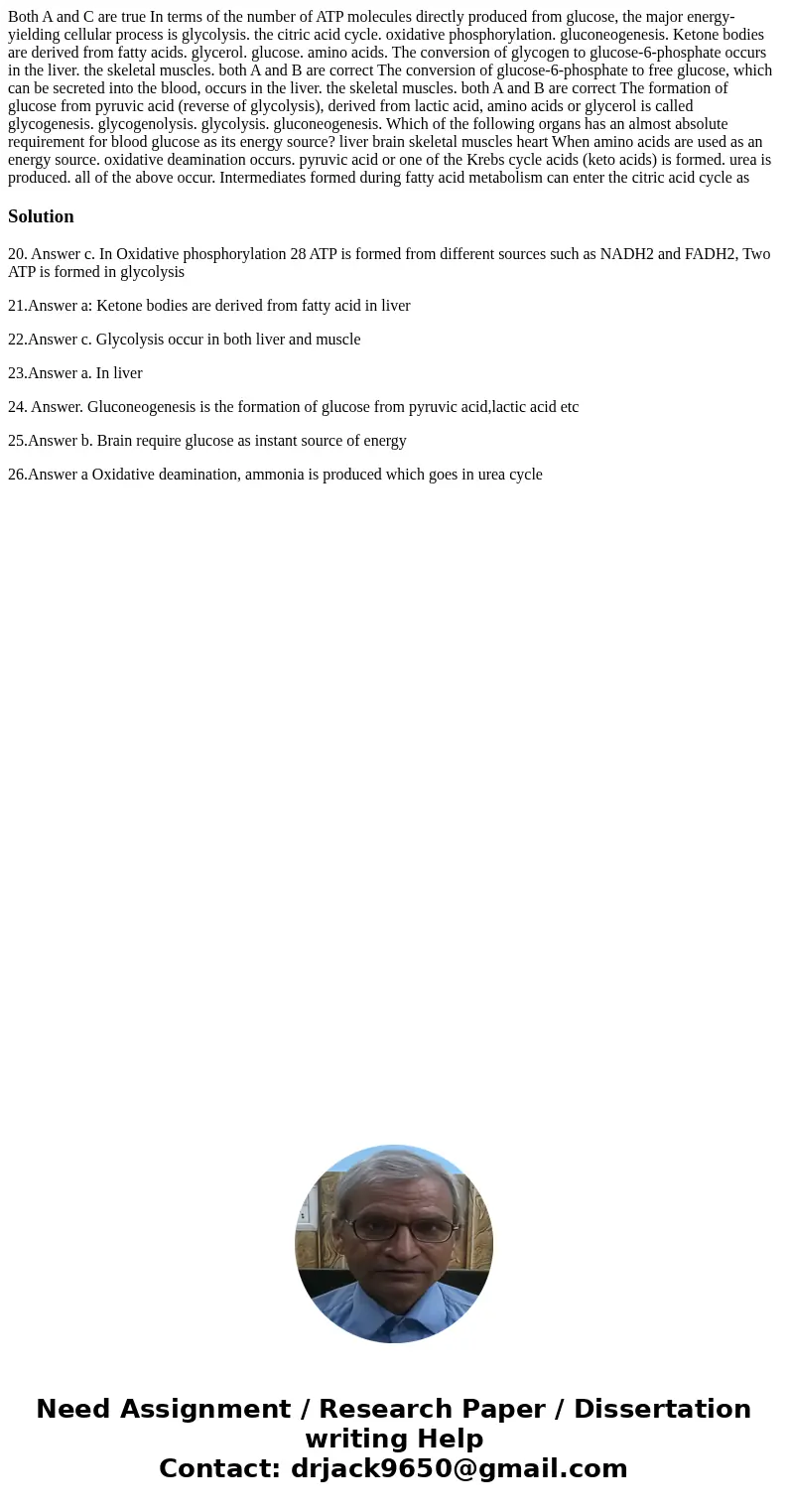Both A and C are true In terms of the number of ATP molecule
Both A and C are true In terms of the number of ATP molecules directly produced from glucose, the major energy-yielding cellular process is glycolysis. the citric acid cycle. oxidative phosphorylation. gluconeogenesis. Ketone bodies are derived from fatty acids. glycerol. glucose. amino acids. The conversion of glycogen to glucose-6-phosphate occurs in the liver. the skeletal muscles. both A and B are correct The conversion of glucose-6-phosphate to free glucose, which can be secreted into the blood, occurs in the liver. the skeletal muscles. both A and B are correct The formation of glucose from pyruvic acid (reverse of glycolysis), derived from lactic acid, amino acids or glycerol is called glycogenesis. glycogenolysis. glycolysis. gluconeogenesis. Which of the following organs has an almost absolute requirement for blood glucose as its energy source? liver brain skeletal muscles heart When amino acids are used as an energy source. oxidative deamination occurs. pyruvic acid or one of the Krebs cycle acids (keto acids) is formed. urea is produced. all of the above occur. Intermediates formed during fatty acid metabolism can enter the citric acid cycle as
Solution
20. Answer c. In Oxidative phosphorylation 28 ATP is formed from different sources such as NADH2 and FADH2, Two ATP is formed in glycolysis
21.Answer a: Ketone bodies are derived from fatty acid in liver
22.Answer c. Glycolysis occur in both liver and muscle
23.Answer a. In liver
24. Answer. Gluconeogenesis is the formation of glucose from pyruvic acid,lactic acid etc
25.Answer b. Brain require glucose as instant source of energy
26.Answer a Oxidative deamination, ammonia is produced which goes in urea cycle

 Homework Sourse
Homework Sourse